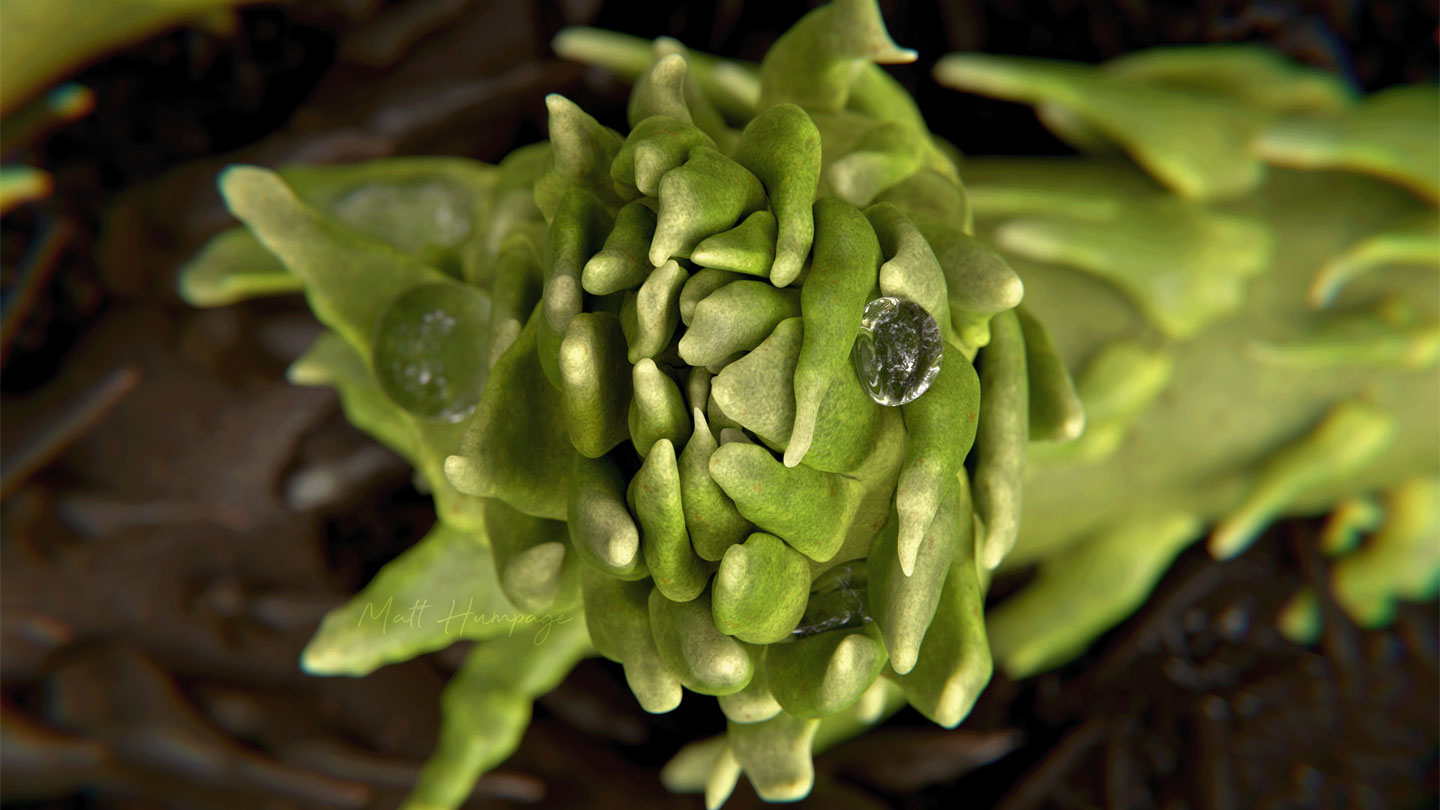An intriguing discovery in a 407-million-year-old fossilized plant is challenging scientists’ current understanding of plant evolution.
Most present-day land plants exhibit spiral patterns that follow the famous Fibonacci sequence. These patterns have led scientists to believe that they originated in some of Earth’s earliest land plants. However, researchers have found that the leaves of this ancient plant, which belonged to one of the first plant groups with developed leaves, have spiral arrangements that cannot be described using Fibonacci numbers. This finding, reported in the June 16 issue of Science, adds complexity to the study of plant evolution.
The study contributes to our understanding of plant diversity, according to botanist Barbara Ambrose, the director of laboratory research at the New York Botanical Garden. She was not involved in the research.
In the Fibonacci sequence, each number is the sum of the two preceding numbers: 1, 1, 2, 3, 5, 8, 13, and so on. Spiral patterns in plants that follow Fibonacci numbers can be observed in the leaf arrangements of succulents, the bracts of a pinecone, and the seeds of a sunflower, among many other plants.
In plants with spiral leaf patterns, the leaves can be described by sets of curved lines that spiral either clockwise or counterclockwise from the center. If the number of clockwise and counterclockwise curves corresponds to Fibonacci numbers, it is referred to as Fibonacci spiraling.
The reasons behind the prevalence of Fibonacci spiraling in modern plants are still unknown, but it is speculated that this pattern helps maximize the space between leaves and other plant parts. It is also possible that auxins, a type of plant growth hormone, play a role in the formation of these patterns.
S. Hetherington
In a recent study, paleobotanist Sandy Hetherington from the University of Edinburgh and colleagues examined fossils of the extinct plant species Asteroxylon mackiei, a member of the lycopod group that also includes modern club mosses.
The fossils were recovered from the Rhynie chert, a sedimentary rock deposit that is approximately 400 million years old and contains remarkably well-preserved fossils of early land plants. Through digital reconstruction, Hetherington’s team created 3D representations of the original plants based on hundreds of cross-sectional images collected in 1969.
Among the four reconstructed plants, two exhibited non-Fibonacci spiraling in their leaf arrangements. While both plants had eight counterclockwise spirals (a Fibonacci number), one had seven clockwise spirals and the other had nine, neither of which corresponds to Fibonacci numbers. The leaves of the remaining two plants did not grow in spirals but instead formed a series of rings along the stem.
Study coauthor Holly-Anne Turner, a paleontologist at University College Cork, expressed surprise at these findings since Fibonacci spirals are prevalent in modern plants and in later fossil records. The Asteroxylon mackiei fossils predate the next-earliest lycopod fossils exhibiting non-Fibonacci spiraling by almost 50 million years.
While lycopods evolved leaves differently from other plant groups, some modern lycopods do display Fibonacci spiraling. This implies that spiraling patterns may have evolved independently in different plant lineages, according to Peter Crane, a botanist and president of the Oak Spring Garden Foundation who was not involved in the study.
Ambrose points out that Asteroxylon mackiei is just one species, and further reconstruction of early plants could provide more insights into the natural evolution of these spirals.
Turner suggests that advancements in computing technology make it worth revisiting hand-analyzed fossils from decades ago. The detailed information obtained through computer simulations could lead to significant discoveries.
Denial of responsibility! SamacharCentrl is an automatic aggregator of Global media. In each content, the hyperlink to the primary source is specified. All trademarks belong to their rightful owners, and all materials to their authors. For any complaint, please reach us at – [email protected]. We will take necessary action within 24 hours.

Shambhu Kumar is a science communicator, making complex scientific topics accessible to all. His articles explore breakthroughs in various scientific disciplines, from space exploration to cutting-edge research.


